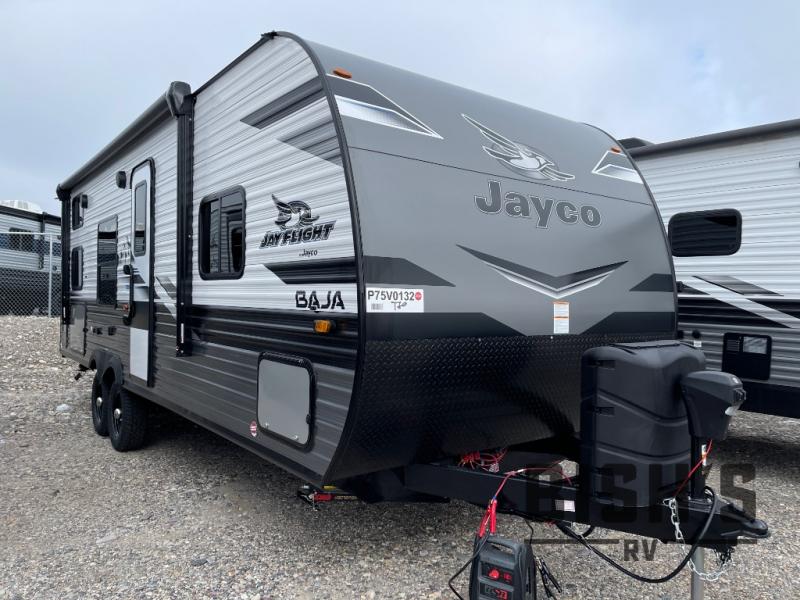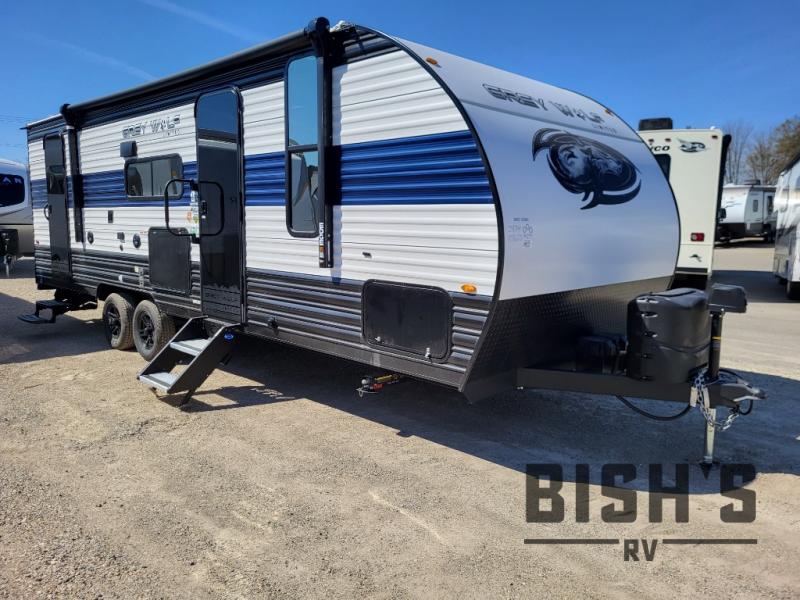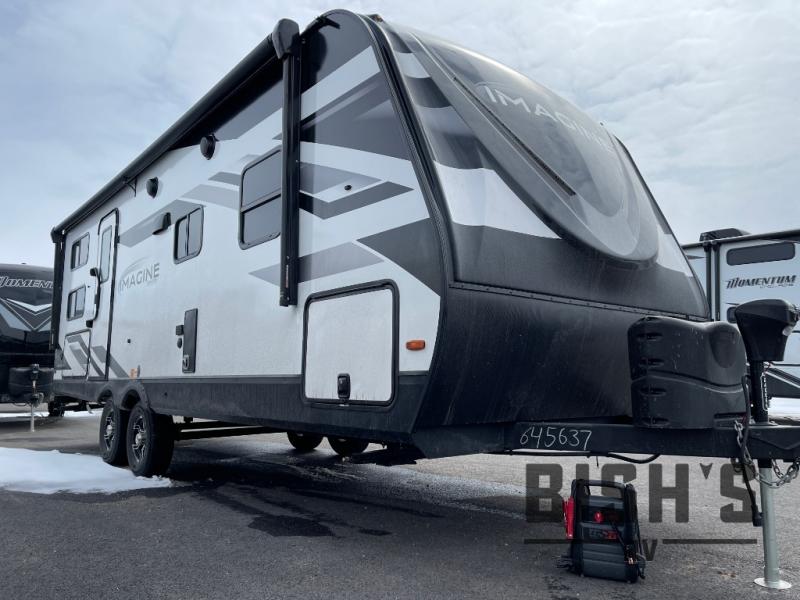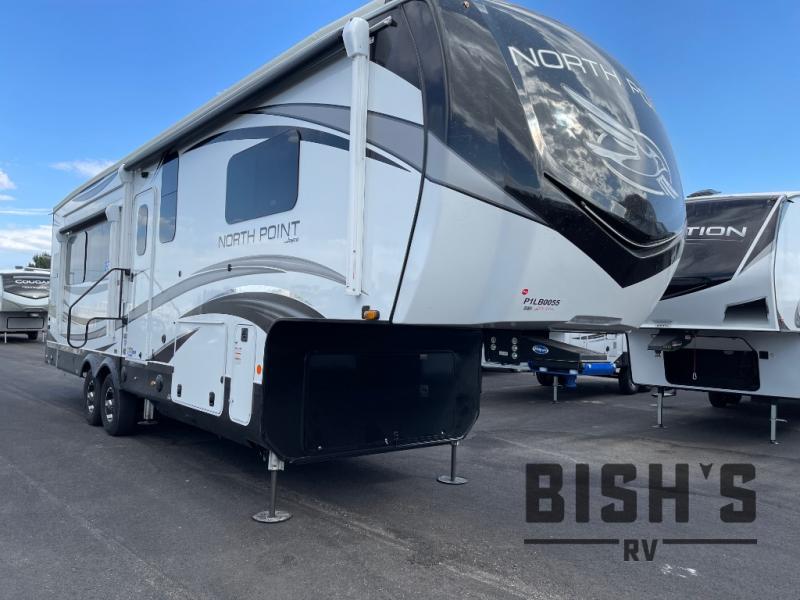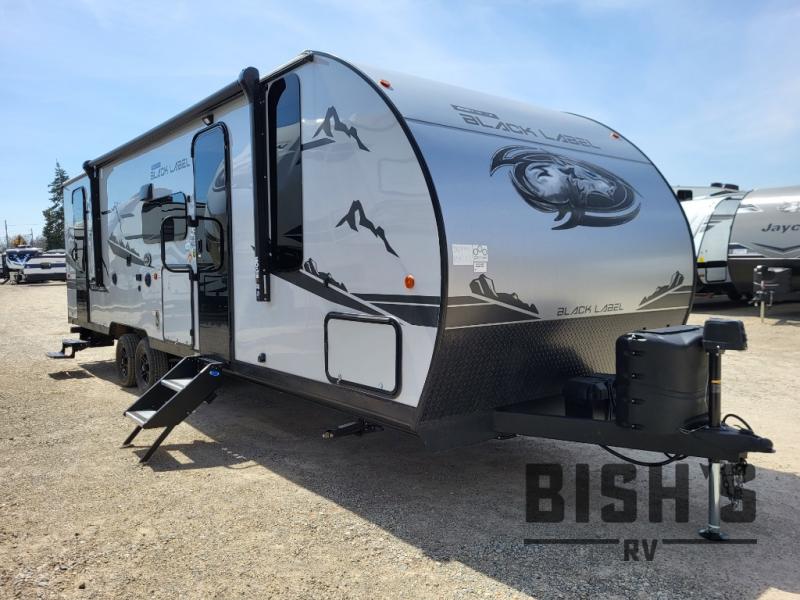
One of the most frequent questions our RV outfitters get asked several times a day is, “Which type of RV construction is better — conventional “stick and tin” or laminate “Fiberglass”?
If you don’t know the difference between “stick and tin” and “laminate” (or even know what “stick and tin” and “laminate” mean) you’re in luck!
At Bish’s RV, we’ve helped thousands of RV buyers navigate through the process of finding their perfect camper.
In this article, I’ll break down the differences between stick and tin and laminate RV construction types so you can make a smart decision on which type of RV construction is the right fit for you.
By the end of this article, you’ll have a clear understanding of the pros and cons of each type of construction and be well on your way to owning the RV of your dreams.
Josh the RV Nerd Breaks down the differences between Aluminum and Wood Built RVs.
TABLE OF CONTENTS
- What do Stick and Tin and Laminate Mean?
- What is Stick and Tin Construction?
- What is Laminate “Aluminum” Construction?
- Which Type of RV Construction is Best?
- Stick and Tin vs Laminate Comparison Chart
- Stick and Tin Construction PROS and CONS
- Laminate Construction PROS and CONS
- Sample Stick and Tin RVs
- Sample Laminate RVs
- “Hybrid” RV Construction
- Which RV Construction Type is Best For Me?
- Your Next Steps For Choosing Your RVs Construction
What do “Stick and Tin” and “Laminate Mean”?
“Stick and tin” and “Laminate” are two different types of construction methods commonly used in RVs.
What is “Stick and Tin” Construction?
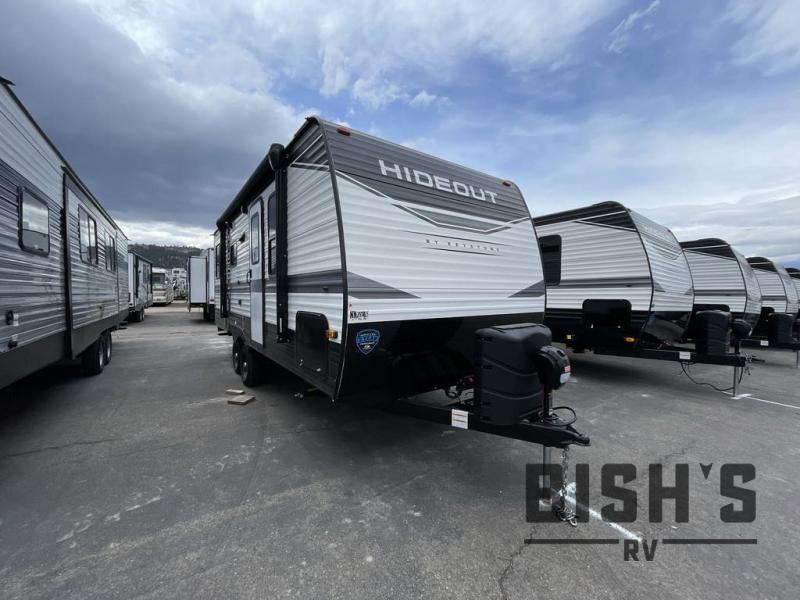
“Stick and Tin,” also referred to as “conventional” refers to the traditional construction method for RVs that has been used for decades. In this construction method, the RV’s frame is made of wood, with a thin layer of corrugated metal sheeting (usually aluminum) attached to the frame.
The metal sheeting is held in place by screws or rivets, and the interior walls and ceiling are typically made of wood or synthetic materials. This construction method is called “stick-built” because the wooden frame resembles a stick.

What is “Laminate” Construction?
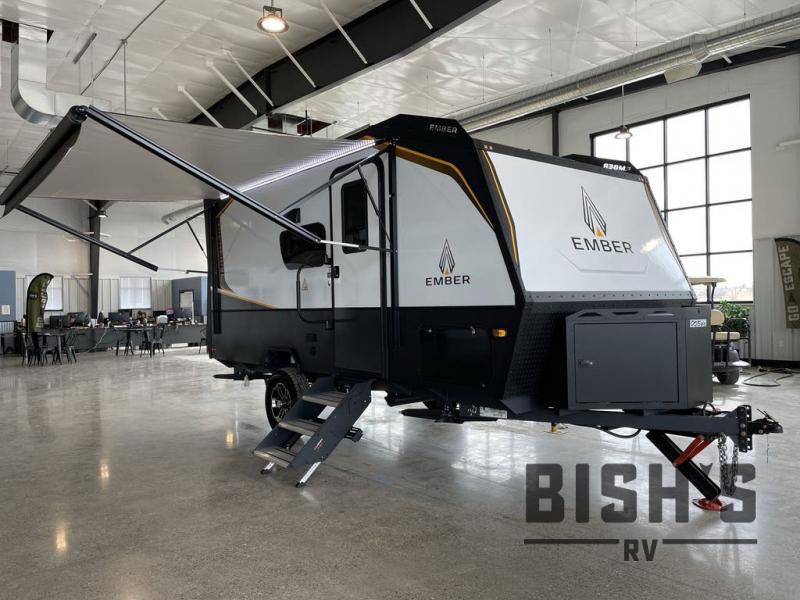
Laminate Construction, on the other hand is a newer construction method that has become increasingly popular in recent years. In this method, the RV’s frame is made of lightweight aluminum, and the walls and roof are made of laminated fiberglass material.
This construction method creates a more lightweight RV, as the laminated fiberglass material is both strong and lightweight.

Laminate RVs Offer More Premium Features
Laminates are considered a more “premium” building method in RV manufacturing. As such, more premium interiors and features are put into this type of trailer. If you are looking for premium high-end features, it is likely you will only find them in a Laminate constructed Travel Trailer.
Which Type of RV Construction is Best?
Both stick and tin and laminate construction methods have their distinct advantages and disadvantages. The best one for you will depend on your specific needs and preferences.
After reviewing the PROS and CONS for both stick and tin and laminate construction types, you will be able to confidently determine which RV construction type is best for your next camper purchase. Read on!
Stick and Tin vs Laminate Construction Comparison Chart

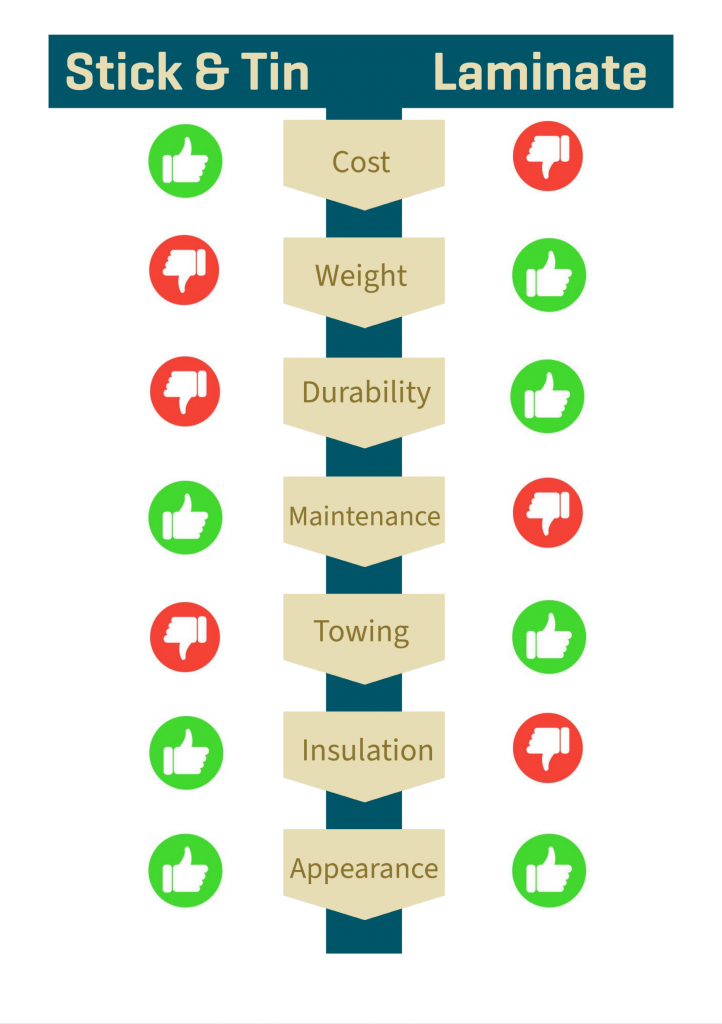
Stick and Tin Construction PROS and CONS
Conventional Stick and Tin RVs have a wooden frame and an exterior made of aluminum or fiberglass. They generally cost less and weigh more.
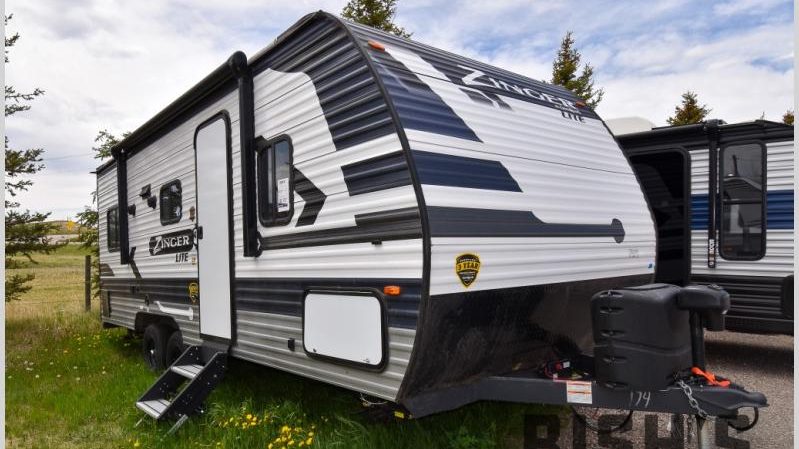
STICK AND TIN CONSTRUCTION PROS
- Stick and Tin Cost: Lower cost compared to laminate-constructed RVs.
The price difference between a stick and tin camper and a laminate camper can vary depending on various factors such as the brand, model, features, and market conditions.
However, as a general estimate, the price of a stick and tin conventional RV is typically around 10% to 30% lower than a similar-sized laminate RV. This can equate to thousands of dollars. - Stick and Tin Maintenance: Less expensive and easier to repair and maintain than laminate RVs.
- Common Construction Materials– The materials used, such as wood and aluminum, are widely available and can be repaired or replaced with relative ease. This can be an advantage if you plan to handle maintenance and repairs on your own or if you’re traveling to remote areas where specialized repair facilities may not be easily accessible.
- Easy Targeted Repairs: The exterior walls are sections of aluminum bands that are easily removed and replaced, as opposed to a large single wall panel, like in laminate RVs. This allows individual sections of the aluminum paneling to be removed, allowing for easier and less expensive targeted repairs.
- Common Construction Materials– The materials used, such as wood and aluminum, are widely available and can be repaired or replaced with relative ease. This can be an advantage if you plan to handle maintenance and repairs on your own or if you’re traveling to remote areas where specialized repair facilities may not be easily accessible.
- Stick and Tin Insulation: Stick and Tin RVs have the ability to be the most insulated RVs.
When it comes to insulation issues, the wooden RV wall studs used in stick and tin RVs are better insulators than aluminum frames.
Both Conventional wood-framed travel trailers and fifth wheels have rigid fiberglass insulation in the sidewalls. Depending on the r rating, fiberglass insulation can provide up to 3.5 times more insulation than the foam insulation used in the sidewalls of laminate RVs.
It’s possible for a laminate RV to be more insulated than a stick and tin, however, if insulation amounts are equal, the better-insulated RV will be the stick and tin. - Stick and Tin Classic Look: Stick and tin RV construction provides a classic and timeless appearance
Many RV enthusiasts prefer the classic looks of a stick and tin, however the clean, modern look of laminate RVs is also appealing to many.
STICK AND TIN CONSTRUCTION CONS:
- Stick and Tin Weight: Heavier compared to laminate-constructed RVs.
The heavier weight can decrease fuel efficiency, require a larger vehicle for towing, make maneuvering in tight spaces more challenging, and possibly reduce its cargo weight capacity. - Stick and Tin Durability: Under long-term conditions, Stick and Tin campers may be less durable than laminate.
To be clear, stick and tin RVs are durable — that’s why manufacturers have been making wooden-framed RVS for more than 60 years. However, if water leaks occur, a wooden frame is more susceptible to water damage and rotting than an aluminum frame.
Additionally, stick and tin campers are sometimes more prone to damage from prolonged weather exposure, especially when it comes to hail — due to the thinner aluminum walls and roof. - Stick and Tin Towing: Harder to tow due to extra weight and wind resistance.
The ribbed corrugations on the outer walls provide structural support, but the bends in the aluminum sheets create more surface area, which greatly increases wind resistance and requires more power to tow. You feel this strain on towing the most when towing at greater speeds. - Stick and Tin Cleaning: More difficult to clean.
The seams between the panels, edges, and other small spaces have to be done by hand.
Laminate Construction PROS and CONS
A laminate RV is constructed with an aluminum frame and laminated walls and roof structure made from various materials such as foam insulation, fiberglass, and plywood. They generally cost more and weigh less.
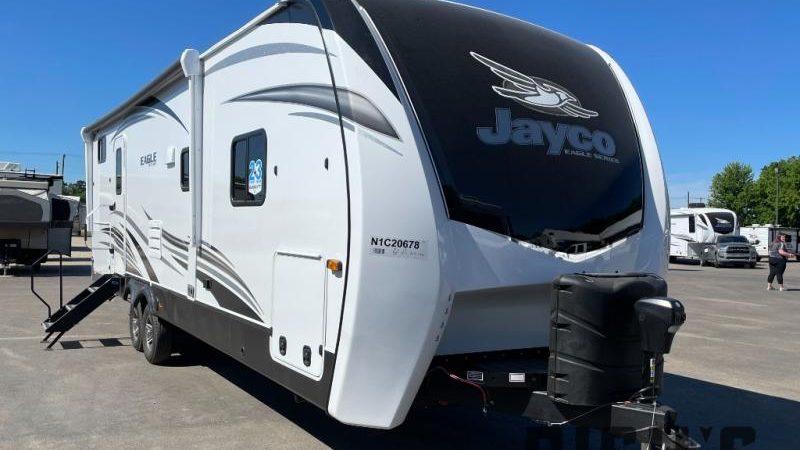
LAMINATE CONSTRUCTION PROS:
- Laminate Weight: Lighter than a conventional stick and tin RV.
A lighter-weight RV can help maximize fuel efficiency, require less power for towing, and make maneuvering in tight spaces less challenging. - Laminate Durability: The aluminum frame and fiberglass paneling of laminate RVs are considered more durable than stick and tin RVs.
Laminate RVs typically hold up better over time to factors such as prolonged weather exposure and general wear and tear. - Laminate Towing: Smooth fiberglass exterior is lighter and create less wind resistance
The lighter weight and smooth walls don’t create as much air resistance as a stick and tin which makes laminate-constructed RVs easier to tow — especially at higher speeds. - Laminate Cleaning: Fiberglass panels take less work to clean.
You don’t have to deal with the siding seams. Many of the panels are flush against the wall, so easier to clean with a brush. - Laminate Smooth, Clean Look: The sleek, modern look of laminate RVs are preferred by many who appreciate a clean appearance.
However many RV enthusiasts prefer the classic look of stick and tin RVs.
LAMINATE CONSTRUCTION CONS:
- Laminate Cost: Higher cost compared to stick and tin RVs.
Laminate RVs are constructed with more expensive materials and have a more labor-intensive production process. This raises the cost of laminate RVs. Sometimes thousands of dollars more.
A laminate aluminum and fiberglass RV can be up to 30% more expensive than a similar-sized stick and tin wooden-frame camper. - Laminate Maintenance: More expensive and difficult to repair and maintain.
- Uses harder-to-find, less common materials
- The exterior walls are single sections of fiberglass or plywood. If a repair has to be made to the outer wall or interior frame, the whole outside wall has to be removed and then replaced. This not only makes repairs challenging, but also expensive.
- Uses harder-to-find, less common materials
- Laminate Insulation: Aluminum Frame is not as good an insulator as Wood Frame.
Aluminum lets more heat pass through it compared to wood.
Most Laminate RVs use rigid foam insulation in the sidewalls. Rigid foam is used because it is a more compact insulation. This means less space is needed to add multiple layers of foam insulation. By incorporating multiple layers of foam, higher R-values are able to be achieved, which results in increased insulation, so laminate RVs have the capability to be heavily insulated.
Though Stick and Tin can be more insulated than laminate RVs, it is not uncommon for laminate RVs to be more insulated than stick and tin.
Sample Stick and Tin RVs
Jayco Jay Flight 264BH
The Jayco Jay Flight 264BH is a great stick and tin option for those who are on a budget and looking for a lightweight, easy-to-tow RV. This travel trailer usually costs between $23,000 – $35,000 and can sleep up to 8 people, making it ideal for families or groups of friends.
Keystone Cherokee Greywolf 23DBH
The Cherokee Grey Wolf 23DBH is a popular choice for those seeking a stick and tin RV that can accommodate a large group. The 23DBH costs between $28,000 – $50,000. This travel trailer can sleep up to 8 people with a queen-size bed, double bunk beds, and a convertible dinette.
Check out More Travel Trailers RVs at Bish’s RV
Sample Laminate RVs
Grand Design Imagine 2400BH
The Grand Design Imagine 2400BH is a spacious and comfortable laminate RV that can sleep up to 8 people. The 2400BH costs between $49,000 – $60,000. It features a queen-size bed, double bunk beds, a convertible dinette, plus a full bathroom with a shower.
Jayco Northpoint 310RLTS
The Jayco North Point 310RLTS is a luxury fifth wheel designed for couples or families who want to enjoy the comforts of home while on the road. North Point 310RLTS campers cost between $82,000 – over $100,000. This fifth wheel is spacious enough to accommodate up to 4 people comfortably.
Check out More Fifth Wheels at Bish’s RV.
Hybrid RV Construction
Get the best of both worlds!
If you’re looking for the lower cost of a wooden frame RV, but like the clean, smooth look of fiberglass-paneled outer walls, there is a “hybrid” option. These hybrid campers typically weigh more than aluminum frame laminate campers, but they cost less.
Hybrid campers are a great choice for someone who wants the durability and easier towing of a fiberglass exterior while still being able to manage the heavier weight of the wooden frame.
Which RV Construction Type is Best For Me?
When it comes to choosing between a stick and tin or a laminate construction, there is no clear one-size-fits-all “better” option. Each has its pros and cons, and ultimately, the decision depends on your needs and priorities.
It’s important to consider factors such as budget, travel plans, and personal preferences when making a decision.
Here are some broad guidelines to help you determine which RV construction type is the best fit for you:
Conventional Stick and Tin RV Construction is a Good Fit For:
A stick and tin RV can be a good fit for someone who is on a budget and cost-conscious, doesn’t mind a slightly heavier RV, and is looking for a durable option that allows for easier and less expensive repairs and modifications.
With a Stick and Tin RV you typically get more RV per dollar compared to a similar-sized Laminate RV.
Laminate RV Construction is a Good Fit For:
A laminate-constructed RV can be a good fit for someone who prioritizes lightweight and easy towing, and plans on doing a lot of frequent camping and highway travel with their RV.
With a Laminate RV you typically get more RV per pound compared to a similar-sized Stick and Tin RV.
Hybrid RV Construction is a Good Fit For:
A hybrid-constructed RV can be a good fit for someone who wants a lower-cost option compared to a laminate RV, but wants the clean, smooth look and durability of a fiberglass exterior.
Hybrid-constructed RV’s typically are a happy medium between stick and tin and laminate — costing more than similar-sized stick and tin and weighing more than laminate.
Your Next Steps For Choosing Your RV’s Construction
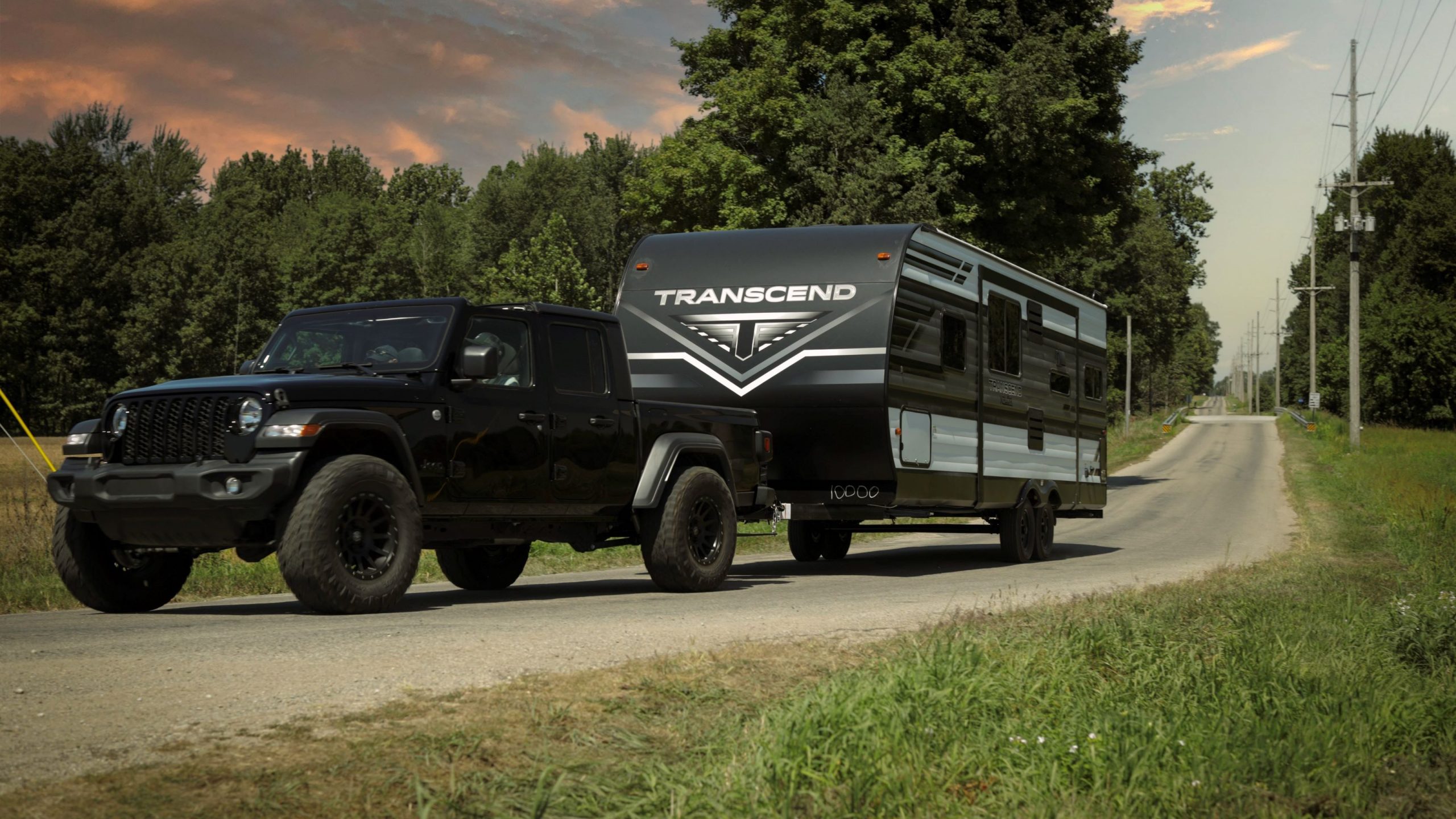
Now you know what “stick and tin” and “laminate” mean. You may not be an RV expert yet, but you’re getting closer.
The next step is to start shopping for your new camper so you don’t just talk the talk, but you start walking the walk — or in the case of RVing — you start camping in the camper.
At Bish’s RV, we sell both stick and tin and laminate-constructed campers and recommend them both — depending on which type fits your family’s needs.
If you still have questions, our experienced outfitters can provide guidance and advice to help you make the best decision based on your budget and travel plans.
If you’re not quite ready to shop for a camper, but want to learn more about RVs, check out these articles:
Learn how to read a floor plan
How much does an RV Cost in 2023?
Is a Fifth Wheel or Travel Trailer Better?

Greg Long
Bish’s RV Content Manager
Amateur adventurer; professional dreamer.
aka: The Bish-Blog-Guy

